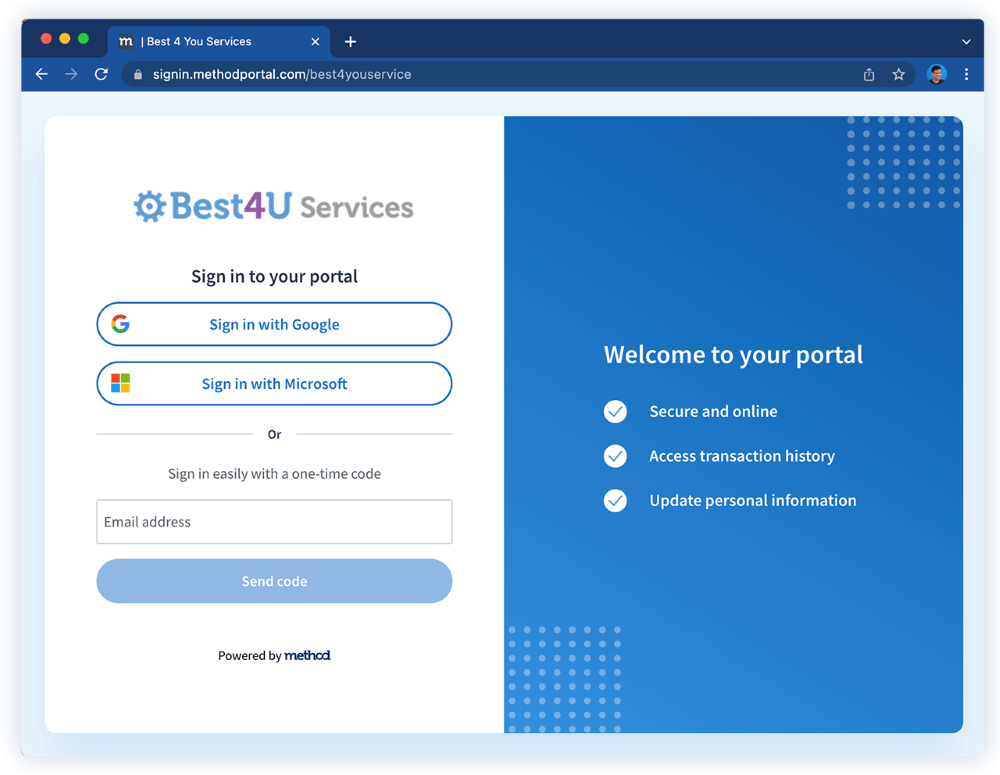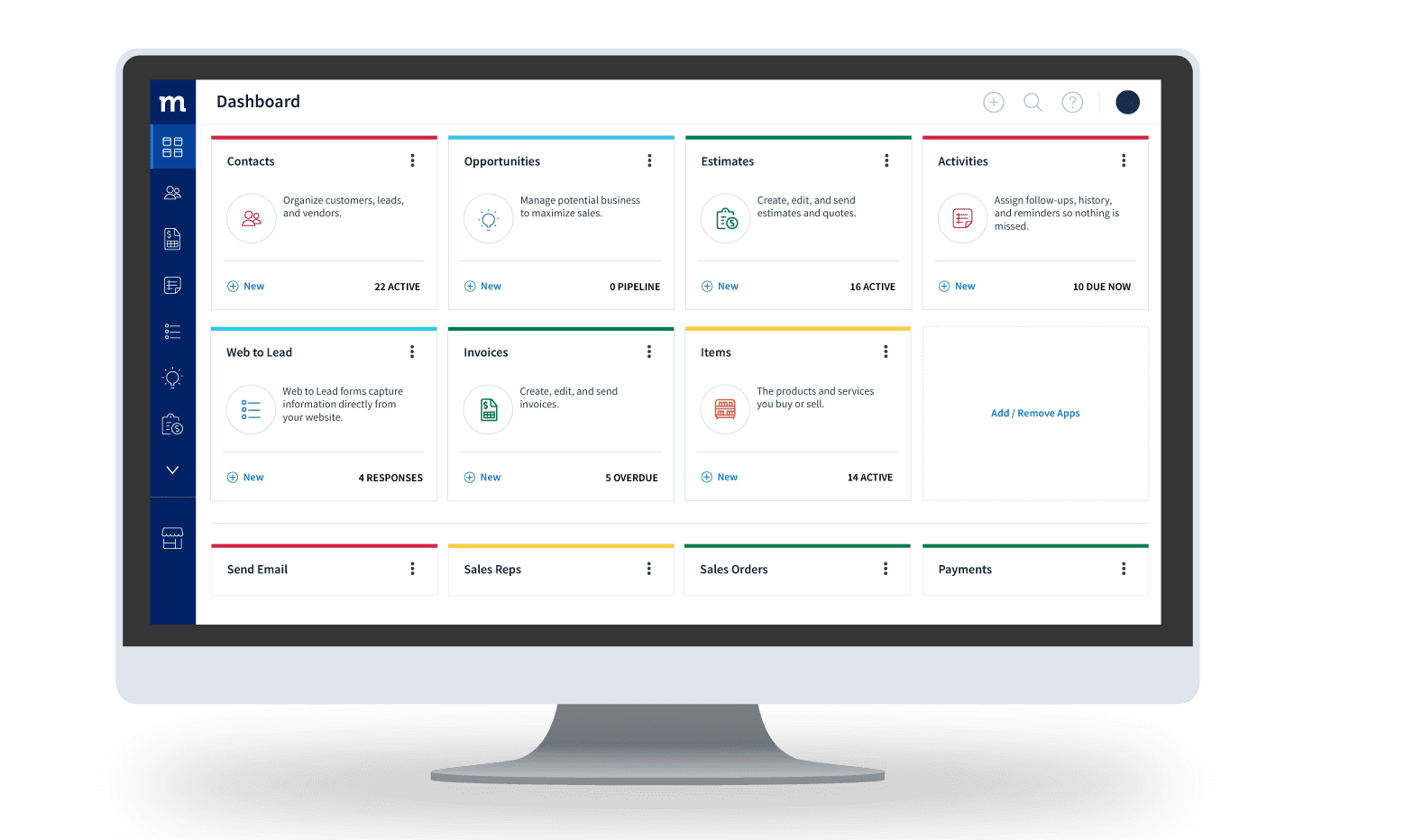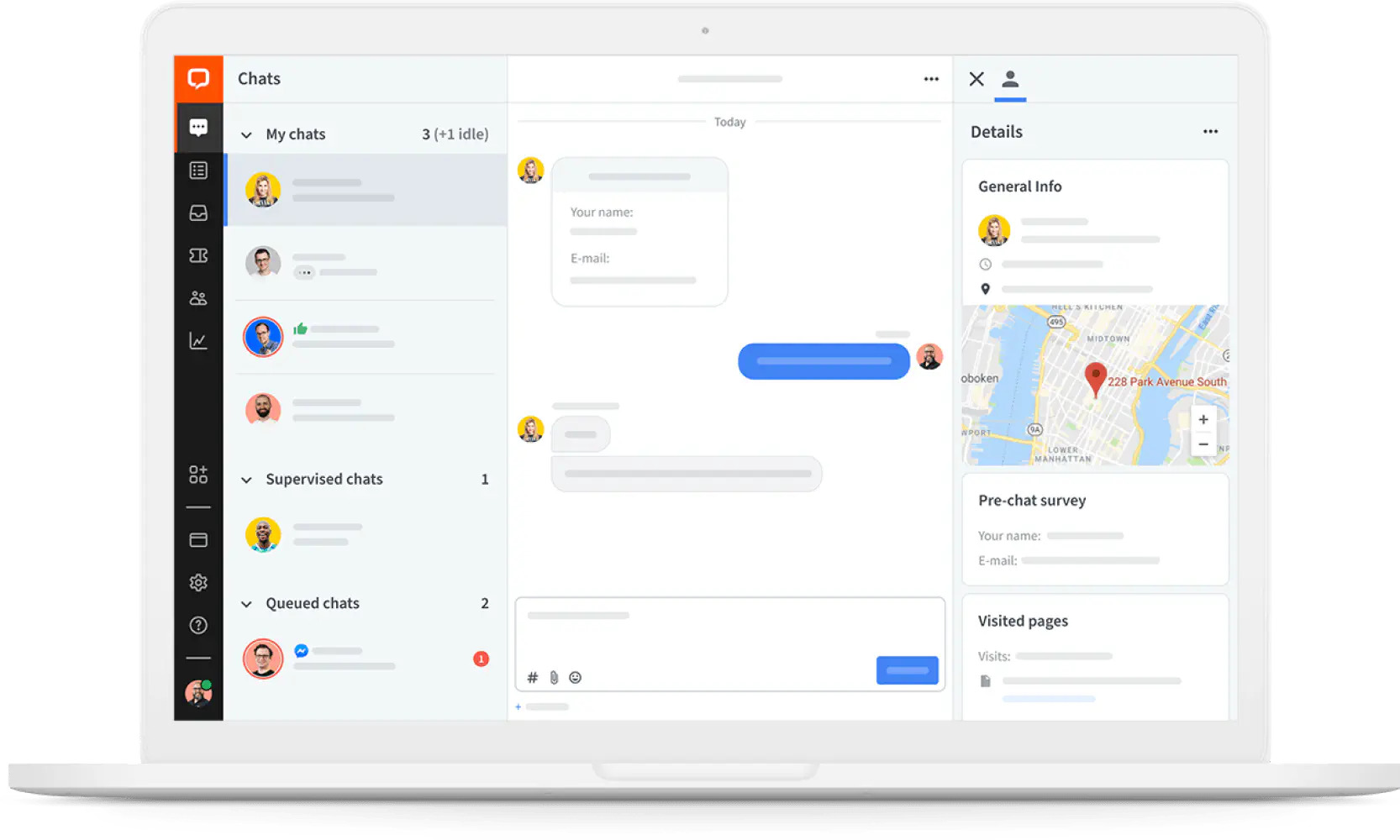Providing top-notch customer service is no longer optional. It’s essential, as customers now expect more than just a great product—they demand a smooth, personalized experience from start to finish.
Poor customer service can undo the hard work of building trust, leading to lost sales, negative reviews, and reputational damage.
To avoid this, it’s crucial to streamline customer service by:
- Optimizing processes.
- Leveraging technology.
- Empowering your support team.
Ready to learn eight ways to deliver the best customer service possible? Let’s get started.
Why should you streamline customer service?
Before getting into all the ways you can streamline customer service, it’s important to understand why you should:
Improve customer interactions and relationships
One of the most significant benefits of streamlining customer service is the improvement it brings to customer interactions and relationships.
An optimized customer service strategy lets you interact in a timely fashion and engage with them more often. The best part? With the opportunity to personalize interactions, you’ll make customers feel more valued and will better sustain key business relationships.
Drive customer convenience, satisfaction, and retention
Smooth customer service ensures that customers find it easy to engage with your company. For example, providing multiple interaction channels reduces friction points in doing business with you. When a customer can interface with a business using their preferred method, they are more likely to be satisfied and stick with the business.
Not to mention, your customers will be much happier and likely to refer more business opportunities to you if you give them personalized attention and prompt responses and follow-ups.
Reduce response times and resolve issues faster
When you streamline customer service, your customers will experience:
- Reduced wait times.
- Less unnecessary back-and-forth.
- Fewer transfers between representatives.
- Faster resolution of their issues.
This efficiency fosters trust and builds confidence in your company’s ability to deliver on its promises. Moreover, streamlined customer service enables businesses to provide proactive support, anticipating customers’ needs and offering solutions before they even ask.
Lower costs
Optimizing customer service can significantly reduce operational expenses by implementing targeted strategies such as:
- Workflow automation.
- Self-service options.
- Effective communication.
For example, automating repetitive tasks like ticket routing or customer follow-ups frees up agents to handle complex issues, reducing labor costs while improving efficiency.
You can also empower your customers to resolve simple issues independently, cutting down on support tickets and reducing the cost per interaction by implementing self-service tools such as:
- Customer portals.
- Knowledge bases.
- AI-powered chatbots.

Increase sales
Positive customer experiences foster customer loyalty, driving repeat business and referrals, which means more deals for you to close.
Efficient issue resolution and personalized support build trust, encouraging customers to explore more products or services. Not to mention, satisfied customers are more likely to upgrade or purchase premium offerings.
Gain a competitive advantage
Exceptional service is one surefire way for your business to gain an edge over others in your industry. When you deliver fluid, personalized experiences, you stand out from the competition and build lasting relationships. Customers will choose you over your rivals due to your reputation for efficiency, empathy, and proactive support.
Reduce inquiries by anticipating questions
Streamlining customer service helps you stay one step ahead of customer inquiries. You can anticipate and provide answers to customers’ questions proactively, significantly reducing the volume of incoming queries. You can achieve this through:
- Comprehensive FAQs and knowledge bases.
- Clear product information and tutorials.
- Personalized communication and timely updates.
By providing customers with easy access to relevant information, you encourage them to find answers independently. This lightens the support load and enhances customer satisfaction.
8 ways to streamline customer service for your business
1. Optimize customer interactions
Optimizing customer interactions is a key strategy to streamline customer service for your business. It involves understanding and meeting customer needs across various touchpoints, ensuring that every interaction adds value and fosters satisfaction. Here’s how you can get started:
Map out the customer journey
Create a visual representation of every customer interaction with your brand, from initial awareness to post-purchase engagement. This will help you understand and address customer needs and pain points at each stage of the buying process. Visualizing your customer experience can also help identify areas for improvement and facilitate customer happiness.
Adopt an omnichannel approach
Integrate various methods of shopping available to consumers in your customer service, such as:
- Online.
- In-store.
- Over the phone.
This approach provides a stress-free customer experience—whether they’re shopping from a desktop, mobile device, or in a brick-and-mortar store. Focus on creating a consistent brand experience, so no matter where the customer interacts with your company, they receive the same level of service and quality.
Personalize every touchpoint
Ensure that each interaction, whether it’s on social media, through customer service, or during the checkout process, is tailored to customer preferences.
Personalizing communication and products or services enhances the customer experience and boosts loyalty and satisfaction.
Provide multiple contact methods
Use various communication methods for maximum efficiency. Traditional phone calls, which remain a preferred method for many, and modern channels like email, live web chat, and social media each serve a unique purpose and cater to different preferences.
2. Leverage technology
Digital tools help you improve efficiency and drive conversions. Leveraging technology involves:
- Updating internal systems.
- Adopting modern technologies.
- Training employees to use these tools effectively.
Take the following steps to adopt technology for your processes, and keep reading for specific examples of technology tools you can use.
Automate common processes and ticketing
Automation can help you promptly address, categorize, and route customer inquiries to the appropriate team member. This reduces errors and time spent on repetitive tasks, making your team happier and more productive at the same time. With the right automation system in place, companies can focus on providing quality service and resolving issues more effectively.
Use customer service management or CRM software
A customer relationship management (CRM) software lets you easily manage your business’ interactions with customers and enhance your sales process. With diverse options available, such as Method CRM, Zoho CRM, and Salesforce, you can choose a platform that best fits your needs.

Try out AI-powered chatbots and live chat
AI-powered chatbots and live chat systems:
- Offer real-time assistance.
- Provide answers to frequently asked questions.
- Can even handle complex tasks like scheduling appointments or making purchases.
With advancements in natural language processing, these chatbots have become more sophisticated, offering a conversational experience that closely mimics human interaction.
Integrate support with other crucial systems
Connect your support platform with those of other key departments like sales, marketing, and product development. This connection can facilitate uninterrupted communication and data exchange, eliminating silos and leading to improved decision-making and productivity.
From a technological standpoint, you can use various methods such as APIs, middleware, or custom coding to ensure system compatibility and maintain data integrity.
3. Enhance self-service options
Enhancing self-service options reduces support queries, relieving pressure on your customer service system. Provide easy-to-use resources to enable customers to find answers and resolve issues independently.
Think about it: most customers prefer to help themselves before reaching out for support. In fact, studies show that 70% of customers expect companies to have self-service options. So, what can you do?
Build and maintain a comprehensive knowledge base
Develop a comprehensive knowledge base with clear, concise articles, tutorials, and informational blogs. Organize content by category and make it searchable. This will become your customers’ go-to resource for troubleshooting.
Create FAQ pages and sections on your website
Designate a clear FAQ section on your website, addressing common questions and concerns. Keep it up-to-date and easily accessible to keep those same questions from flooding your inbox everyday.
Establish a service request catalog
A service request catalog is a centralized platform that enables customers to submit and track service requests easily. By providing standardized request templates, automated workflows, and real-time status tracking, this step:
- Simplifies customer support.
- Reduces request ambiguity.
- Boosts operational efficiency.
Offer a self-service platform
Remember that the majority of customers want to solve their problems themselves? A self-service platform is one way you can encourage users to find solutions independently. Not only do your customers get the help they need immediately and without friction, but your team gets time back to focus on other value-added activities.
4. Utilize social media
Social media offers a ready-made opportunity to connect and interact with customers. These platforms can be especially effective because customers often go to those social platforms to talk about your brand.
If you can use social media well, you can join that ongoing conversation and steer it in the direction that benefits the customer and your business. The following strategies can help you.
Leverage social platforms for customer support
Platforms like Twitter, Facebook, and Instagram aren’t just for marketing. They’re also powerful tools for delivering top-notch customer support,
Increase response rates through social channels
Craft engaging content that resonates with your audience using various formats. Offering incentives tailored to your audience’s preferences can also significantly increase participation rates.
Remember, a well-executed strategy can lead to response rates that far exceed the average.
Make support more accessible and social
Ensure that support content is perceivable and usable by everyone, including those with disabilities. You can make your support more inclusive by focusing on accessibility. For example, you should:
- Add alt text to images.
- Use clear and simple language.
- Provide subtitles for videos.
5. Empower your support team
Empowering your support team is crucial to fostering a positive work environment and enhancing overall performance. When your team feels equipped and confident, they’ll provide top-notch support, resolving issues efficiently and effectively. Here’s how you can motivate your support team to meet and exceed your expectations:
Equip agents with the right tools
The right tools can make all the difference in your customer service processes. Implement user-friendly software like helpdesk platforms and CRM systems to enable your team to deliver on time.
Improve training and collaboration
Provide comprehensive and ongoing training through workshops, webinars, and online courses to impart required skills and knowledge to team members. Then, encourage collaboration, feedback, and idea-sharing.
Implement knowledge management systems
Implementing a knowledge management system (KMS) is a strategic approach to capturing, organizing, and sharing an organization’s collective expertise. You can implement the system by:
- Identifying your organization’s needs.
- Selecting the right tools.
- Training employees.
- Continuously updating to adapt to new challenges and information.
6. Gather and act on feedback
Customer feedback is the unsung hero of customer service. It provides valuable insights you can use to improve your support processes. Here are some hot tips:
Proactively ask for customer input
Don’t wait for customers to offer their views or opinions. Instead, use every interactive opportunity to ask for their input.
Analyze performance constantly
Monitor and analyze key performance indicators. Look out for areas of strength and weakness and measure your progress. You’ll learn how to refine your support processes for better results.
Handle unhappy customers effectively
No, wishing those unhappy customers away just won’t work. The truth is, they’re inevitable. Acknowledge the customer’s concerns, provide clear explanations with solutions or alternatives, and follow up to ensure resolution.
Improve average resolution time
The time it takes your business to resolve a customer’s query directly affects customer satisfaction. Track your average resolution time and work towards a shorter turnaround for improved satisfaction.
7. Implement proactive strategies
This is about anticipating the needs of your customer base, resolving issues before they escalate, and delivering personalized experiences. By being proactive, you’ll:
- Reduce support queries.
- Boost customer satisfaction.
- Increase loyalty.
Here’s how to solve customer service issues before they arise.
Provide proactive support
Reach out to customers before they contact you for help. You can do this through automated solutions, personalized communication, and real-time support. In doing so, you’ll:
- Resolve issues faster.
- Reduce support volume.
- Enhance customer engagement.
Identify and engage super users
Super users are your most loyal and knowledgeable customers. Identifying and engaging with them can help you:
- Gather valuable feedback.
- Test new features.
- Create brand ambassadors.
Gamify support interactions
Gamification adds a fun twist to support interactions. Incorporate rewards, badges, or leaderboards to encourage customers to:
- Engage with your support resources.
- Share knowledge.
- Resolve issues independently.
Incentivize customer engagement
Reward customers for participating in support activities. This can include offering:
- Discounts.
- Exclusive content.
- First access to new features.
- Other value-adding freebies.
8. Utilize data and analytics
Leveraging data and analytics is crucial to delivering exceptional customer service. Let’s dive into the ways data and analytics can supercharge your service.
Maintain a 360-degree view of customers
Consolidate data from various touchpoints, including:
- Purchase history.
- Support interactions.
- Social media activity.
With a 360-degree view, you’ll understand customer needs, preferences, and behaviors, enabling personalized support.
Use customer data to inform decisions
Strategic decisions, from product development to support channel optimization, are better made with customer data in mind.
Analyse customer feedback, sentiment, and behavior to identify trends and areas for improvement. Data-driven decisions lead to enhanced customer experiences and increased loyalty.
Evaluate the effectiveness of support channels
Assessing support channels (e.g., phone, email, chat) helps identify strengths and weaknesses. Track metrics like:
- Resolution rate.
- Response time.
- Customer satisfaction.
By evaluating channel effectiveness, you’ll optimize resource allocation and reduce support costs to improve overall customer satisfaction.
Dedicated tools to streamline customer service
Ready to take your customer service to the next level? The following tools can help you:
Help desk software
Help desk software is crucial for streamlining customer service. This software serves as a centralized hub for managing customer inquiries, issues, and feedback. With help desk software, you can:
- Track and organize lead and customer interactions.
- Assign and prioritize tickets.
- Automate routine tasks.
- Measure performance metrics.
- Enhance collaboration among support teams.
There are many software options you can use, including:
- Zendesk.
- Freshdesk.
- HubSpot service hub.
- TicketLab.
Unified communication platforms
Imagine having all your communication channels in one place, making it a breeze to engage with customers smoothly across:
- Voice.
- Email.
- Chat.
- Messaging.
- Social media.
- Video conferencing.
Top unified communication platforms include:
- Cisco Webex.
- Microsoft Teams.
- RingCentral.
- 8×8 X Series.
Social media management tools
Social media is a customer service powerhouse, but maximizing your business presence on those platforms and managing multiple platforms can be overwhelming. That’s where social media management tools come in. They help:
- Monitor brand mentions.
- Respond to customer questions.
- Schedule content.
- Analyse performance.
- Collaborate with teams.
You can use any of the following tools to manage your social media:
- Hootsuite.
- Buffer.
- Sprout Social.
- SocialPilot.
CRM software
CRM (customer relationship management) software tools are also crucial to streamline customer service processes. They help businesses manage customer interactions more effectively, ensuring that every customer feels valued and heard.
Imagine having a detailed profile for each customer that includes their history, preferences, and past interactions with your company—all accessible to your support team in real time. This level of organization means that when a customer reaches out for help, your team can provide personalized and informed responses quickly.
If you’re a QuickBooks and Xero user, Method CRM is your best bet. It offers the following features:
- Two-way, instant estimate, invoice, and payment sync with QuickBooks or Xero.
- Automated customer workflows, such as lead collection via web-to-lead forms.
- Comprehensive reporting and analytics tools for insightful data analysis.
- Self-service customer portals that enable your customers to make payments, access invoices, and more. Integrations with your favorite apps and payment gateways include PayPal and Stripe.
- Extensive customization with help from experts to fit your workflows to specific business needs.
Live chat integrations
Integrating live chat features streamlines communication, making it effortless for both your team and your customers. By connecting live chat with other tools and platforms, you can:
- Automate routine tasks.
- Gather valuable customer insights.
- Deliver smooth support experiences.
So, what can you integrate live chat with? Some popular options include:
- CRM systems.
- Email marketing services.
- Social media platforms.
Some popular live chat platforms that offer integrations include:
- Intercom.
- LiveChat.
- Freshchat.
- Drift.
- ManyChat.

Image credit: LiveChat
Virtual phone service
Virtual phone services have become essential tools for businesses looking to streamline their customer service operations. These services allow companies to manage calls and communications without the need for traditional landlines, providing flexibility and efficiency.
Some top virtual phone services include:
- Grasshopper.
- RingCentral.
- Vonage Business.
- Google Voice.
Recap: How to streamline customer service for your business
Optimizing customer interactions and leveraging technology will help you streamline customer service for your business.
Make your customers feel in control by providing self-service options and using social media to stay connected to them.
Equip your customer service agents with the skills and tools they need to deliver exceptional services and evaluate customer service performance through feedback and metrics for continuous improvement.
By implementing these strategies, your business will exceed modern customer expectations and foster loyalty.
Ready to streamline customer service without the extra effort? Try Method free for 14 days.
Streamline customer service FAQs
Why is customer support necessary?
Customer support is the frontline where interactions occur, problems are solved, and lasting relationships are built. Good customer support can lead to increased customer retention, as satisfied customers are more likely to return and even advocate for the brand.
What is systemizing?
Systemizing is a methodical approach to organizing tasks and processes in a structured manner. It’s essential for enhancing efficiency, productivity, and scalability in various aspects of a business.
What is customer onboarding?
Customer onboarding is a critical process that businesses use to welcome new customers and help them start using a product or service. A well-designed onboarding process educates the customer about the product and reinforces their decision to choose the service, ensuring they understand its value and how to use it effectively.






